Cassava Cake with Macapuno Recipe That Melts in Your Mouth
Filipino desserts always spark curiosity, and this creamy cassava cake with macapuno offers pure tropical magic.
Sweet coconut strings dance through dense, velvety layers of cassava.
Luscious textures blend traditional ingredients into something extraordinary.
Local bakeries across the Philippines cherish these delicate recipes passed through generations.
Rich and comforting, each slice tells a story of culinary heritage.
Smooth custard and tender cassava create a symphony of flavors you can’t resist.
Dive right in and savor this delightful tropical treat!
Cassava Cake With Macapuno That’s A Tropical Treat
Ingredients in Cassava Cake with Macapuno
Main Ingredients:
Cassava: A starchy root vegetable that forms the base of the cake, providing a unique texture and authentic Filipino flavor.
Coconut Milk: Creamy liquid that adds richness and traditional tropical taste to the cake.
Macapuno: Sweet coconut sport that brings extra sweetness and distinctive texture.
Dairy Ingredients:Flavor Enhancers:Cassava Cake with Macapuno Prep
Step 1: Warm Up the Oven
Fire up your oven to 350°F and get ready for a sweet adventure.
Grab a 9×9-inch baking dish and give it a quick spray or butter massage to prevent sticking.
Step 2: Create the Magic Mixture
Gather your delicious ingredients:Grab a spacious mixing bowl and combine all these wonderful ingredients.
Whisk everything together until you have a smooth, dreamy batter that looks like liquid gold.
Step 3: Bake to Perfection
Pour your luscious mixture into the prepared baking dish.
Spread it out evenly with a spatula.
Sprinkle macapuno across the top for an extra burst of tropical flavor.
If you’re feeling adventurous, add a generous shower of grated cheese.
Slide the dish into the preheated oven and let the magic happen.
Bake for 45-50 minutes until the top turns a gorgeous golden brown and the center feels firm when you gently touch it.
Step 4: Savor Your Creation
Allow the cassava cake to cool down and settle.
This waiting time lets the flavors mingle and intensify.
Slice into beautiful squares and serve either warm or chilled.
Your taste buds are in for a tropical treat!
Cassava Cake Texture Secrets
Cassava Cake That Stays Firm and Moist
Ideal Matches For Cassava Cake
Cassava Cake Filling Options
FAQs
Cassava is a starchy root vegetable native to South America, commonly used in Filipino desserts. It provides a unique, slightly chewy texture and mild, subtly sweet flavor to the cake, making it a traditional favorite in Filipino cuisine.
Not at all! This recipe is straightforward and requires basic mixing and baking skills. The key is to grate the cassava properly and mix the ingredients thoroughly. Even novice bakers can successfully make this delicious dessert.
Macapuno is a mutant coconut variety with soft, jelly-like meat that adds a rich, sweet, and creamy texture to the cassava cake. It enhances the overall flavor and provides a unique Filipino twist to the dessert.
Yes, you can use fresh or frozen grated cassava instead of fresh. If macapuno is unavailable, regular coconut strings or shredded coconut can work. The recipe is flexible and allows for some ingredient modifications while maintaining its authentic taste.
Print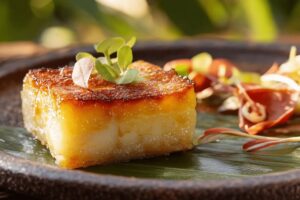
Cassava Cake with Macapuno Recipe
- Total Time: 1 hour
- Yield: 8 1x
Description
Sweet Filipino cassava cake with macapuno blends tropical richness and comforting textures into one delightful dessert. Local ingredients and traditional cooking methods create a creamy, coconutty treat perfect for sharing with family and friends.
Ingredients
Main Ingredients:
- 2 cups grated cassava (fresh or frozen)
- 1 can (14 ounces / 400 milliliters) coconut milk
- 1 can (12 ounces / 340 grams) evaporated milk
- 1 cup condensed milk
Sweeteners and Flavoring:
- 1/2 cup sugar
- 1 teaspoon vanilla extract
- 1/2 cup macapuno (sweetened coconut sport)
Binding and Topping:
- 2 large eggs
- 1/4 cup grated cheese (optional)
Instructions
- Prepare the baking environment by heating the oven to 350°F (175°C) and coating a 9×9-inch baking dish with a light grease layer to prevent sticking.
- Create a smooth, cohesive mixture by thoroughly whisking grated cassava, coconut milk, evaporated milk, condensed milk, eggs, sugar, and vanilla extract in a spacious mixing bowl until all ingredients are fully integrated and no lumps remain.
- Transfer the creamy cassava mixture into the prepared baking dish, using a spatula to distribute the batter evenly and create a uniform surface.
- Enhance the cake’s texture and flavor by generously spreading macapuno across the top of the batter and optionally sprinkling grated cheese for an additional layer of richness.
- Slide the baking dish into the preheated oven and allow the cake to bake for 45-50 minutes, monitoring until the surface transforms into a golden-brown hue and the center becomes firm and set.
- Remove the cassava cake from the oven and permit it to cool completely, which helps the cake stabilize and makes cutting into clean, precise slices easier.
- Slice the cooled cake and serve at room temperature or chilled, savoring the unique blend of tropical flavors and creamy texture.
Notes
- Ensure cassava is finely grated to achieve a smooth, creamy texture without lumps.
- Use fresh macapuno (coconut sport) for the most authentic and rich flavor profile.
- Drain excess liquid from grated cassava to prevent a soggy cake consistency.
- Optional dairy-free adaptation: Replace evaporated and condensed milk with coconut cream for a vegan-friendly version.
- Prep Time: 10 minutes
- Cook Time: 50 minutes
- Category: Desserts
- Method: Baking
- Cuisine: Filipino
Nutrition
- Serving Size: 8
- Calories: 320
- Sugar: 24 g
- Sodium: 150 mg
- Fat: 15 g
- Saturated Fat: 12 g
- Unsaturated Fat: 2 g
- Trans Fat: 0 g
- Carbohydrates: 38 g
- Fiber: 2 g
- Protein: 6 g
- Cholesterol: 50 mg

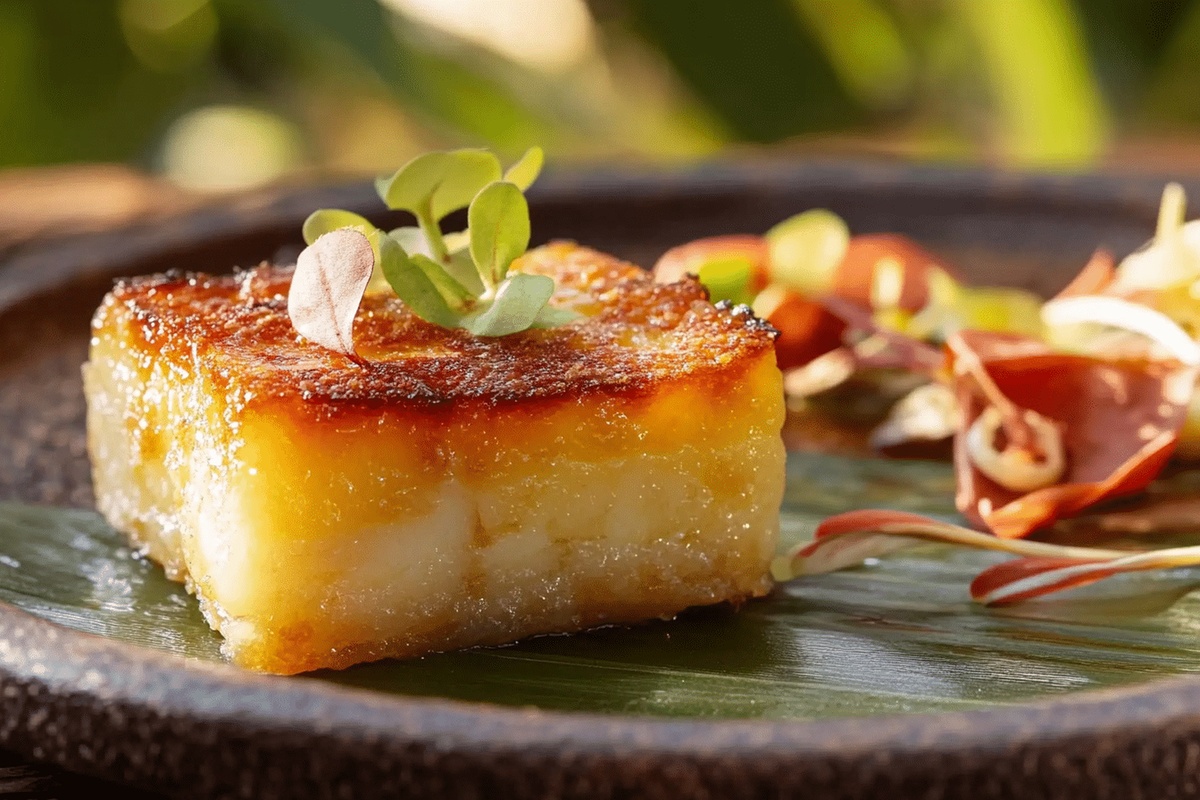
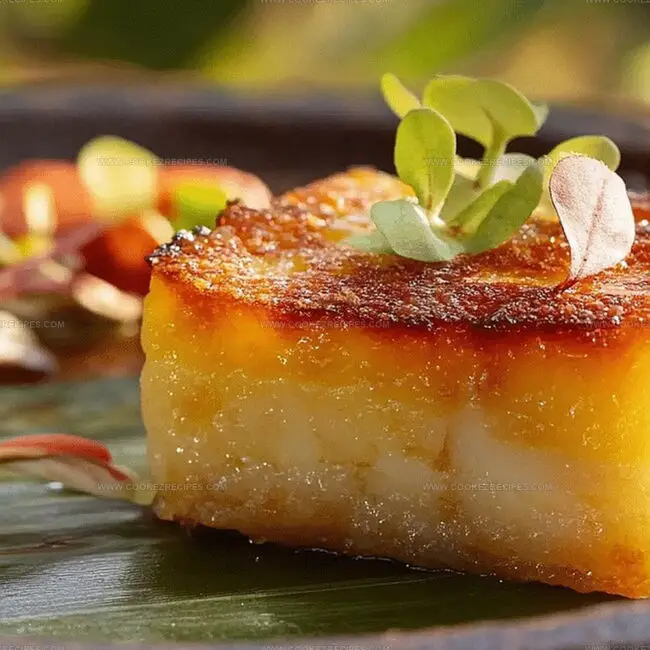
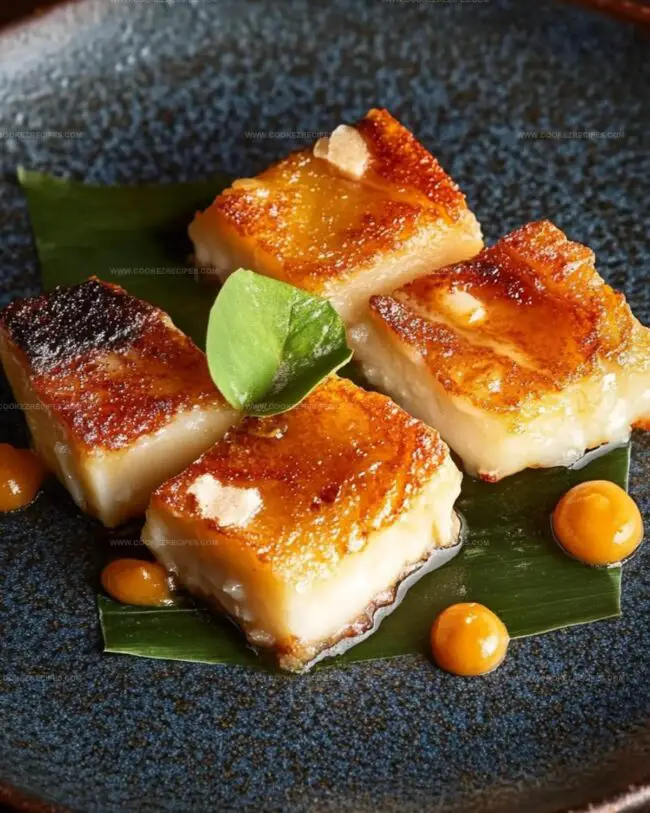
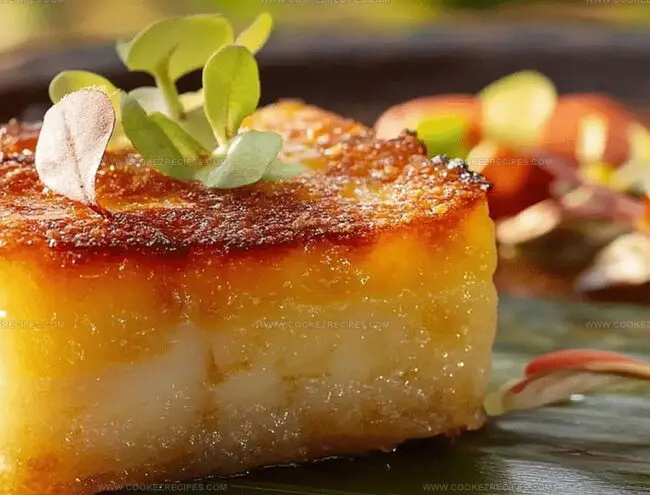
Daniel Bruns
Founder & Culinary Innovator
Expertise
Recipe development for home cooks, Nutritional analysis and meal planning, Culinary education and food writing
Education
Auguste Escoffier School of Culinary Arts
Diploma in Culinary Arts and Operations
Focus: Classical and contemporary cooking techniques, Culinary entrepreneurship and kitchen management, Menu development and food cost analysis
Daniel’s story started with flour on his face and a pie in the oven at his grandma’s house. He later sharpened his skills at the Auguste Escoffier School of Culinary Arts.
His goal? Recipes so simple you’ll want to cook every night. When he’s not whipping up one-pan wonders, Daniel’s outside picking herbs, hosting neighborhood cook-offs, or baking chocolate cakes with his kids, messy, sweet, and unforgettable.